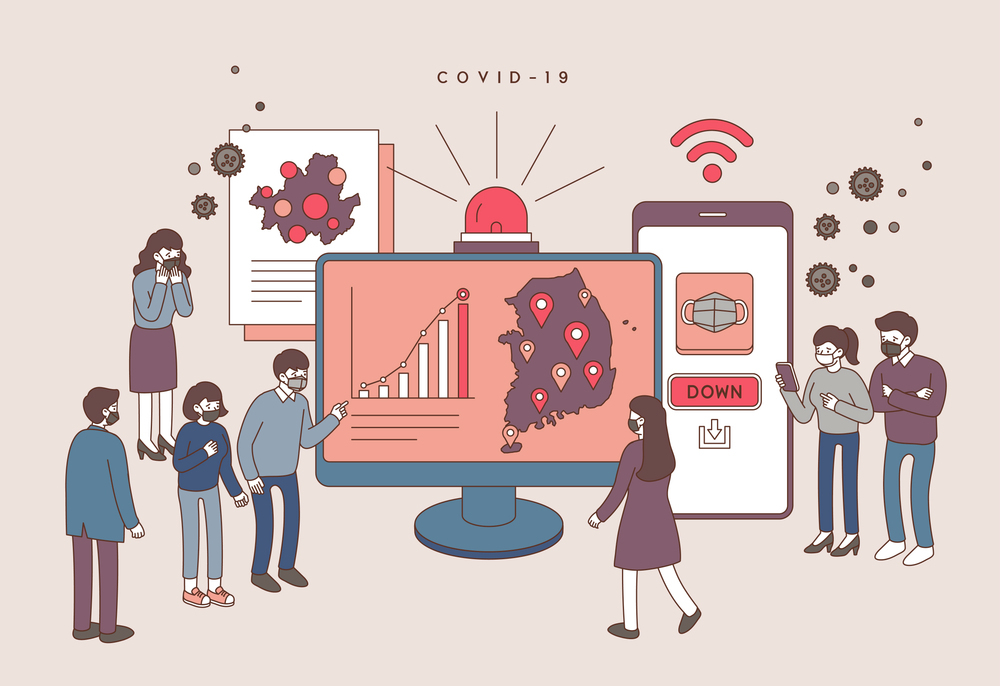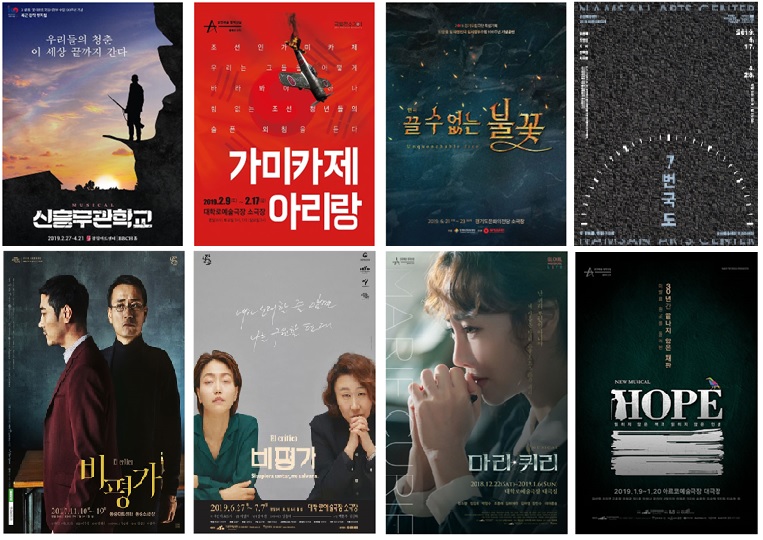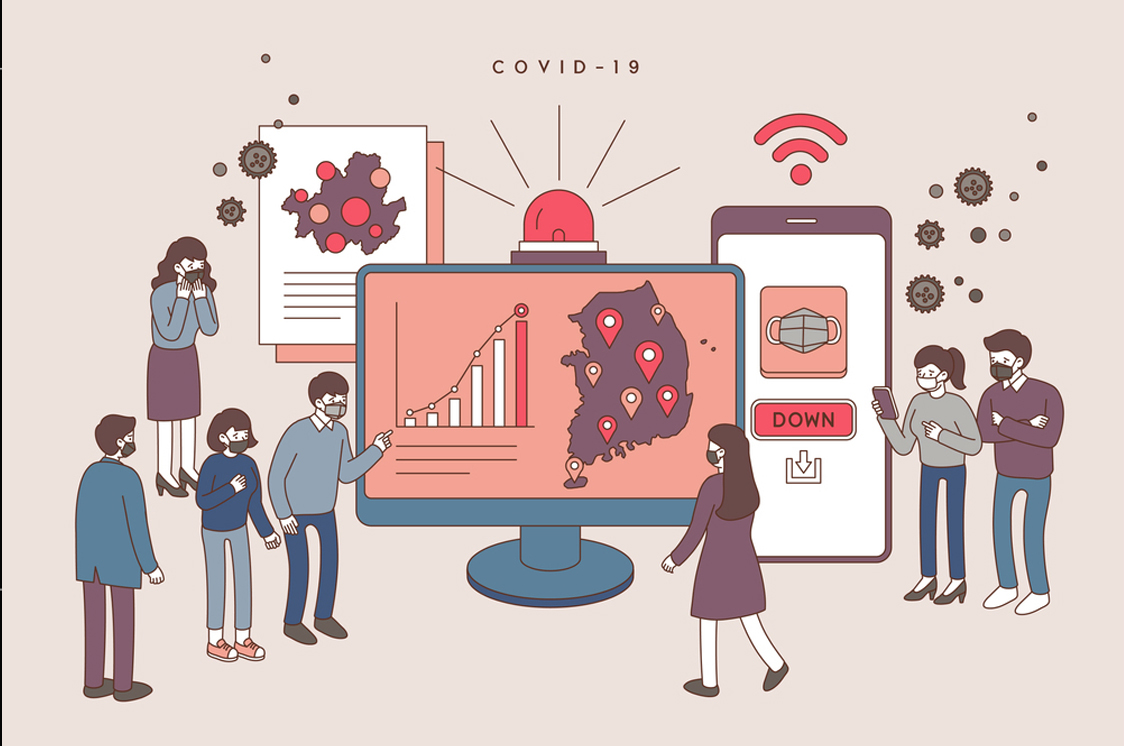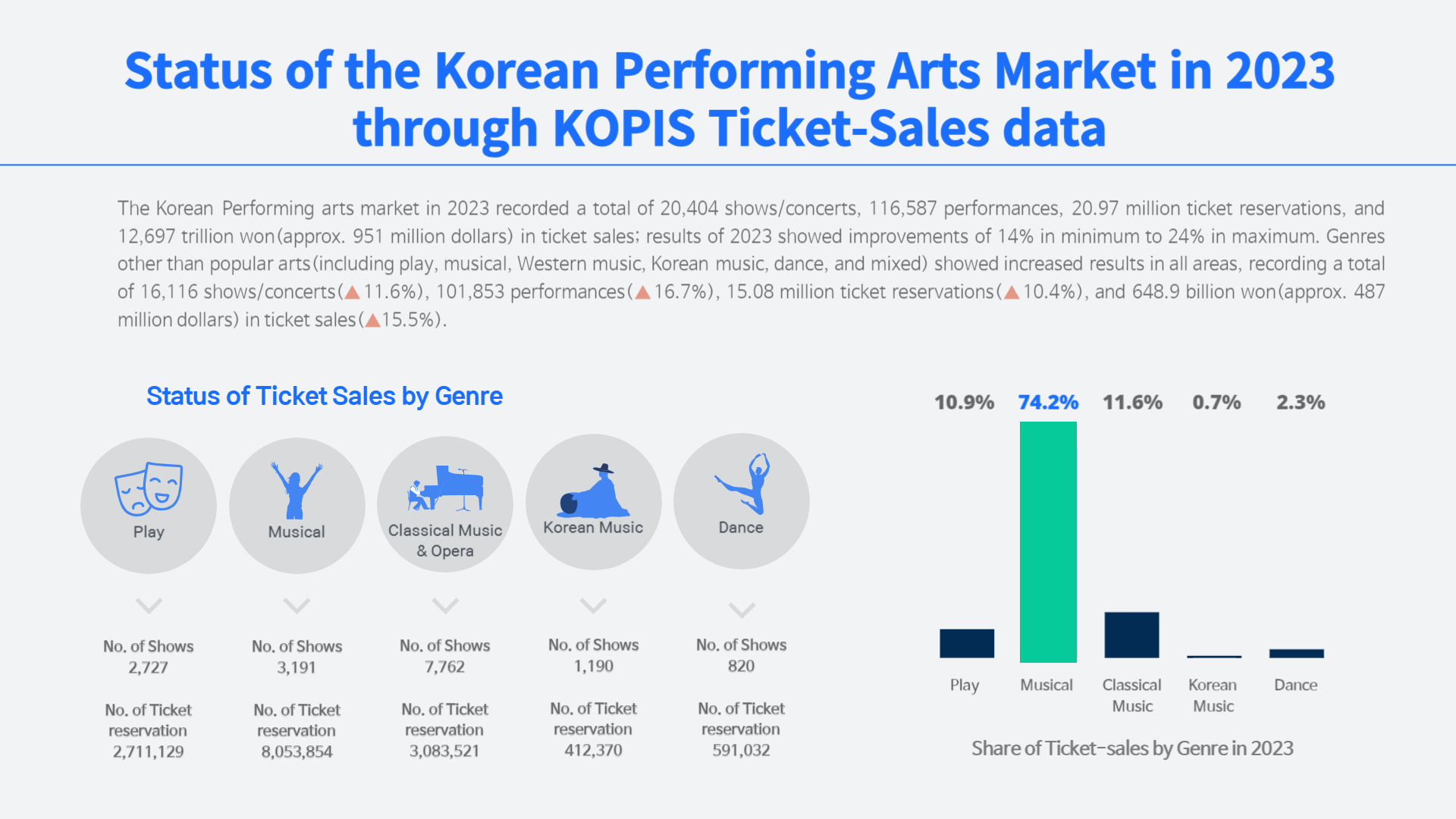Dr.Na, Do-Sam
Senior research fellow
The Seoul Institute

Surprise Attack of COVID-19
After the Chinese city of Wuhan reported an unknown type of pneumoniaon December 31, 2019, the world entered a completely new era in just three orfour months. In only a hundred days after the first confirmed case was reported, the number of cases exceeded 1.5 million. The virus is continuing its powerful infection, bringing the number of confirmed cases to 2.35 million asof April 20.
Corona virus Disease 2019 has resulted inserious socioeconomic changes. The collective infection has destroyed the global value chain. It has also led people to keep their distance from others.For fear of infection, they have chosen social distancing over community life based on profound relationships.Some even say that COVID-19 would serve as a milestone dividing the history ofcivilization, just as the birth of Jesus did so for entire humanity. Thisimplies such a wide, global impact of COVID-19, from everyday life to economicand industrial realms.
COVID-19 has also brought tremendous changes to South Korea’s arts field. The arts, which are based on person-to-person interaction in a closed space, have lost momentum amid the aggressive spread of COVID-19. Theaters, exhibition halls and festivals have closed. Some of the arts facilities that are still open have seen a rapid decreasein the number of their visitors as they have complied with the Korean government’s social distancing rule of two meters. According to Statistics Korea’s “Survey of Service Industries” and Shinhan Card’s credit card sales information for each business type, Korea’s arts field would have made a loss of 413.3 billion won from January 20 (date when Korea’s crisis alert level went up to “caution”) to March 14.1) The Federation of Artistic & Cultural Organization of Korea assumes that as many as 1,614 cultural events worth 26.6 billion won would have been cancelled or postponed between January and April 2020. Seoul City’s internal data also explains that the degree of reduced income felt by artists reaches 88.7%. Such a phenomenon is global so the US, which began to see its number of cases sky rocket later than Korea, has also made an economic loss of over 25 million dollars, with a 75% decrease of audiences.2) The world literally finds itself in the thick of a pandemic.
Arts: A Candle Flickering in the Wind
Looking into more details, the situation isactually worse. In general, industries hit by the spread of infectious diseases like COVID-19 are mostly service industries rather than more traditional industries like manufacturing and goods production. That is because service industries are characterized by contact with people in closed venues. Representative examples of service providers include self-employed people, travel/accommodation businesses, sports/leisure businesses, festival/event organizers and artists.Most of them carry out their activities for people traveling from place toplace. The International Labour Organization (ILO) makes clear that thesebusiness types are exposed to a medium to high risk of COVID-19.
A serious problem is that most of theseservice providers are socially vulnerable, working under unstable conditions.For example, most of artists including writers, actors and painters belong tothese business types. Content providers like game planners, designers, 2D/3D artistsand UI developers also constitute service industries. In many cases, they arenot regular workers but work on a freelance basis as temporary orcontract-based workers. Consequently, they are the first ones to lose jobs intime of instability like the COVID-19 outbreak. They then lose hope, without any help from the social safety net includingunemployment benefits and social security. The spread of the infectious disease even deprives them of their fragile and unstable jobs and they getlost, not knowing how to survive.
Those who are capable of replacing theirservices with untact ones are rather fortunate. Indeed, those providing onlineservices (e.g. couriers) have seized a new business opportunity since the onsetof COVID-19. However, contact-based activities such as sports, the arts,festivals and events don’t have proper alternatives. They just wait for the endof the outbreak. That is why the arts scene facing the infectious disease iscomparable to a candle flicking in the wind. Amid the crisis, they have almostnothing to do. Would there be a crisis more severe than that?
A New Normal Called an Infectious Disease
Some may say that it wouldn’t take long toput an end to the outbreak. Yes, COVID-19 will be gone someday. Nevertheless, three characteristics of an infectious disease demonstrated by COVID-19 tell usthat the crisis will not go away easily. One of the characteristics is aboutthe strangeness of COVID-19.
First of all, COVID-19, which would havedeveloped into three types, doesn’t seem to be linked to temperature very much.Indeed, the disease has spread not only in Russia and Europe but also in hotregions like Southeast Asia and Brazil. So it seems that we must not expect itto disappear as summer comes.
Second, COVID-19 has moved from region toregion, rather than hitting the entire world at the same time. After appearingin China, the infectious disease progressively moved to Iran, Korea and Northern Italy. Later on, it affected Europe and North America and it is now threatening Latin America and the Caribbean, Southeast Asia and Africa. In short, the disease has traveled around the world to put the world into a panic.So nobody knows when the spread of the disease will be finished. For your information, MERS, which had a huge impact on Korea, was first reported in the Middle East in April 2012 and was eradicated in December 2015. However, MERS actually affected Korea for about two months from May 21, 2015 (when Korea reported its first case) to July 4, 2015 (when the country had its last patient). During that period, 186 Koreans were infected and 39 of them died.
What is also notable is the fact that the interval between different infectious diseases has become shorter. After the SARS outbreak in 2002, the H1N1 influenza came in 2009. After that, MERS appeared in 2012, Ebola in 2013, Zika virus in 2015 and COVID-19 in 2020. On average, the interval between two infectious diseases has been three to four years. As for infectious diseases that may appear in the future, some of them may be just local epidemics but others may develop into pandemics and terrify us again. Whether it be an epidemic or pandemic, an infectious disease will keep posing a threat, leading us to live in the era of a new normal, with the rampant spread ofinfectious diseases. We have literally ushered in an era of infectious diseases.
Future of the Arts Forced by an Infectious Disease
It is true that the South Korean government began its response to COVID-19 swiftly, unlike in the beginning of the MERS outbreak. First of all, it has run its quarantine system actively. In addition, it has come up with visible social and policy counter measures including the rescue package for businesses hit hard by COVID-19 and disaster relief funds for all citizens. Moreover, local governments seemed to be in a race to devise relevant policies, thus accelerating the central government’s policy making. This is something worth attention when it comes to the country’s future response to infectious diseases.
Nevertheless, South Korea is still not active enough to answer fundamental questions about our new lifestyle in this era of infectious diseases. The country has mostly focused on helping self-employed people and those in need amid the current crisis. In contrast, it hasn’t adopted a long-term view to consider how to reorganize Korean society and citizens’ life in preparation for living with infectious diseases in the future. The Korean government had to deal with the crisis so urgently that itdidn’t have time to discuss these matters.
The same is true for arts policies. Based on their experience of emergency relief during the MERS outbreak, the Ministry of Culture, Sports and Tourism, Arts Council Korea, Korea Arts & Culture Education Service and Korean Artists Welfare Foundation have run support projects in a prompt manner. Furthermore, local cultural foundations including Seoul Foundation for Arts and Culture have suggested support projects meeting local needs, actively cooperating with the government. Towards its arts field facing a crisis, Korea’s centraland local governments have shown a remarkable attitude unlike in the past.
However, the Korean government hasn’t gone beyond its rescue package to discuss how to respond to the fundamental crisis faced by the arts. Seoul Foundation for Arts and Culture launched its unique open call project entitled “Artists’ Secrets of Dealing with a Disaster” but the project was not intended to bring about serious social discussions or to generate public discourses. Trying to meet imminent challenges, the country didn’t have any time to discuss a distant(?) future.
In this context, it is necessary to clearly understand what social challenges the arts scene is facing amid the spread of COVID-19. The infectious disease generates fundamental problems in our contact-based society. Under these circumstances, human civilization, which already started turningto digital technologies, is dreaming of a new direction towards a distance-based society. So far, people have freed themselves from any restriction of space and time. In this way, they have moved around everywhere to find better places. COVID-19 got in the way of this trend, thus leading everyone to stay in an isolated place or home. The pandemic has formed an “untact, distance-based society” where people do everything without meeting others in person.
That is the essence of the challenges faced by today’s arts field. In principle, the arts are based on contact with people,on space gathering many and unspecified persons and on the interaction between artists and their audience.How could the arts change in the future? Some say that artists could perform and communicate with the public online. However, the modern boundaries of genres and their on-site nature wouldn’t allow the change easily. Those who have joined specific moments of interaction with artists would find it difficult to do away with the energy and vibrations coming from the atmosphere of a given space. That is why thearts field sees its fundamental basis of existence collapse in today’s society becoming an “untact, distance-based” one. In other words, the arts scene faces a reality in which the arts can’t be accepted easily.
In such a reality, the arts must find stability. The arts field isn’t free from all kinds of calamities including infectious diseases and natural disasters like earthquakes. Therefore, the arts need to come up with a system of actively responding to growing risks. I suggest that they overcome such risks with disaster insurance for artists which could be in the form of a “disaster fund for artists” or social security. A disaster fund for artists consists in collecting a certain amount of money in normal times in order to use it during disasters including the spread of infectious diseases like COVID-19. A mid the COVID-19 crisis, the Korean government decided to provide its citizens with disaster relief funds in the form of basic income, as part of its rescue package. This will lead to a greater variety of rescue measures for future disasters. In the same vein, a disaster fund for the arts could contribute to protecting the arts scene which is the most vulnerable to infectious diseases.
Disaster insurance works in the same way.You pay the premium in normal times and you benefit from support during a disaster. Unlike those in other sectors, artists work under unstable conditions as freelancers or temporary workers. So they have no choice but to overcome a disaster on their own. In particular, those who carry out on-site activities like actors and crews suffer even more. This may explain why many artists work for the Korean e-commerce company Coupang these days. Forming a basis for continuing artistic activities even during a crisis would be our first strategy for arts policy in today’s society of infectious diseases.
Going further, we need to discuss changes inthe arts. The arts field is already beginning to change into different forms. Indeed, digital technologies and civil society have transformed production, consumption and communication in the arts scene. Appearing in this context, COVID-19 is threatening the genre arts born of traditional industrialism, thus demanding a new art form that would avoid crowdedness or contact with others: the untact arts. Distance-based activities would come after that. What are then the untact arts?How could we define this form of art and how could we conceptualize it? COVID-19 is suggesting a new direction of the arts in today’s society, from the most fundamental perspective.
New Art Forms Made through Transformation
In such a case, the strategy of the arts(policy) is to pursue social communication and discussion. The secret behindSouth Korea’s unprecedented, successful response to COVID-19 can be found inthe country’s “swift and preemptive quarantine measures” and its “informationshared with everyone.” Indeed, the government explained where confirmedpatients had gone and provided information on the disease and relevant symptomsin a transparent manner. All Korean citizens then became experts of COVID-19and contributed to the country’s quarantine efforts, keeping themselves alert. Consequently, South Korea was able to respond to the infectious disease efficiently, thus serving as a model of disease control for the entire world.
The same efforts need to be made for the arts. Considering the large-scale transformation of the arts scene, we need todiscuss its future changes in addition to dealing with the current crisis. We need to talk to each other about how we are coping with the infectious disease, how we could overcome it and what forms of art we could create on this occasion. It will be the only way to go beyond what we experienced during the MERS outbreak and to encourage collective learning and experiences regarding changes in the arts brought by COVID-19.
Changes in the arts are as severe as the spread of COVID-19. The infectious disease will keep coming unexpectedly and whenever it comes, it will hit our daily lives and the arts harder. Just as people have overcome each crisis by transforming themselves, the arts will also transform themselves. Making new art forms out of such transformation… That should be the future direction of the arts and arts policy in this era of COVID-19.
1) Korea Culture & Tourism Institute, “Coronavirus-Related Changes in the Arts Field and Policy Suggestions,” March 26, 2020.
2) Website of Americans for the Arts (Huh Eun-young, “Current State of Countries’ Response to COVID-19 in the Arts and Culture Field and On-site Demands,” Korea Culture & Tourism Institute, March 27, 2020.)
*This contribution is a translation of the text appearing in the webzine Arts Management No. 444 (April 23, 2020).








 PREV
PREV
.jpg)

.jpg)



.jpg)
.jpg)
.jpg)
.jpg)











